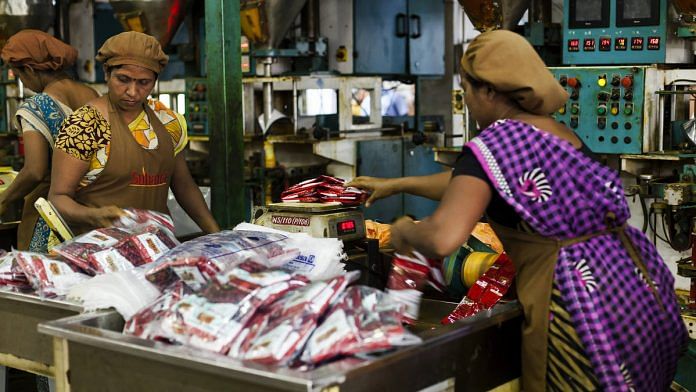New Delhi: The new amendments to the Insolvency and Bankruptcy Code (IBC) are an attempt to save the micro, small and medium enterprises (MSMEs) that have been hit hard by the pandemic and the consequent supply chain disruptions, Ministry of Corporate Affairs Secretary Rajesh Verma told ThePrint in an interview.
“We were concerned about the MSMEs and wanted to ensure that there are alternate frameworks available for companies facing stress. MSMEs are critical to the supply chain and are hit hard due to supply chain disruptions caused by the pandemic. Our aim is to save these micro, small and medium units,” Verma said.
In one of the biggest amendments to the IBC, 2016, notified on 4 April via an ordinance, the Narendra Modi government brought in changes to the way stressed MSMEs can be rescued.
The government enabled a mechanism through which these units could continue operations via the resolution process without needing to shut shop or see a change in management — features that are part of the existent corporate insolvency resolution framework.
The introduction of the new framework comes at a time many small firms have been severely affected by the disruptions caused by the pandemic, including lockdowns and restrictions on people gathering in big numbers in a particular place. There is an expectation that insolvencies among the small firms will see a sharp increase after a year of suspension of the IBC.
As a part of its Covid relief package, the Modi government had announced the suspension of the provisions of the IBC. This effectively meant that lenders could not drag a company to bankruptcy court for any defaults that arose during this period. However, this relief ended in the last week of March, leaving all subsequent defaults open to insolvency proceedings.
Also read: India’s debt to GDP ratio increased from 74% to 90% during Covid, says IMF
‘Aim is to save MSMEs’
Speaking about the changes, Verma said the government wanted to rescue the MSMEs and envisaged “prepack” for this.
He was referring to prepackaged bankruptcy — advance agreement to deal with bankruptcy — which ensures that cases do not reach the NCLT but are resolved beforehand and without management control of the stressed company necessarily changing hands.
The change from a creditor-in-control model to a debtor-in-possession model is a fundamental shift away from the approach that has been followed so far, which forces the promoters of a firm heading towards insolvency to cede control to the creditors.
“The aim is to ensure that the MSMEs continue their operations as going concerns. This will also preserve employment. We have put in place sufficient safeguards as well,” he said.
The ordinance proposes many safeguards to ensure this new resolution framework is not misused. These include the approval of two-thirds of the financial creditors and agreement among 75 per cent of the firm’s shareholders for a stressed promoter (corporate debtor) to continue to run the company.
According to the ordinance, the pre-packaged resolution framework can only be invoked for defaults of up to Rs 1 crore. Further, the resolution process has to be completed within 120 days.
Welcome move, say analysts
Soumitra Majumdar, Partner, J Sagar Associates, said this is a welcome move and is aimed at flexible, timely and viable resolutions while causing the least disruption.
“While modelled on debtor-in-possession approach, it vests significant consent rights to the financial creditors, such that the mechanism cannot be mis-used by errant promoters,” he said in a 5 April note.
He added that the changes retain the “competitive tension” so as to nudge promoters to propose plans with least impairment to rights and claims of creditors.
Also read: RBI finetunes inflation-forecasting model to more accurately capture price dynamics







Is there a reason why Indian government initiatives are constantly being referred to as the Modi government? Is one man responsible for the policies passed by this entire government body?